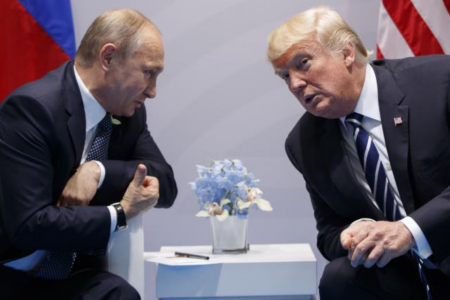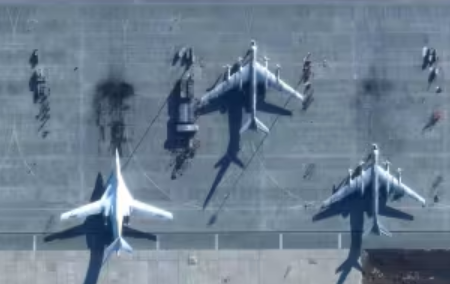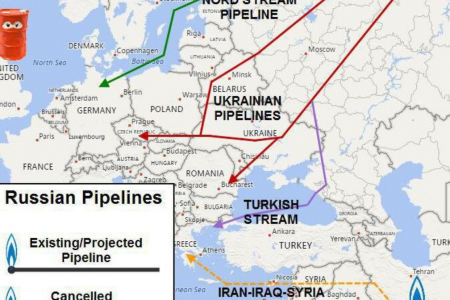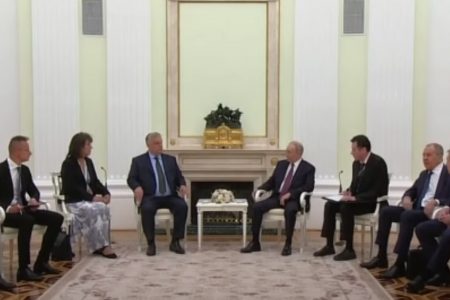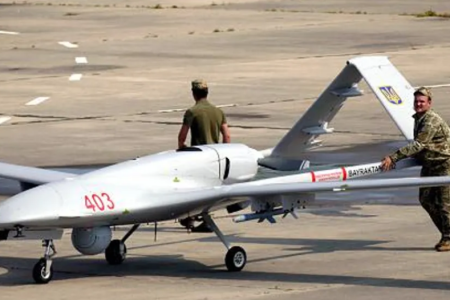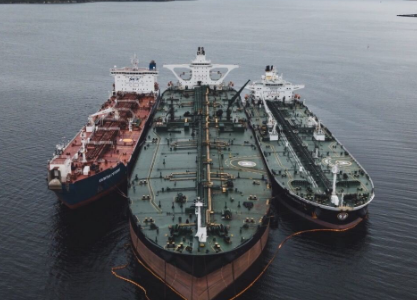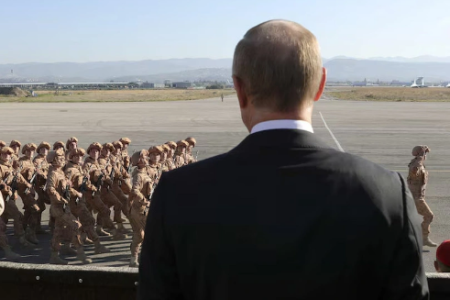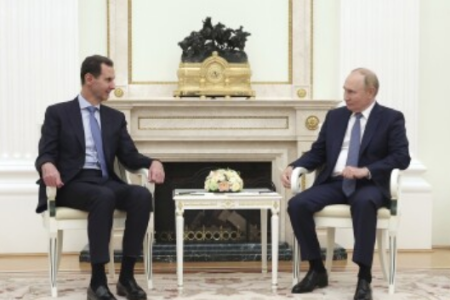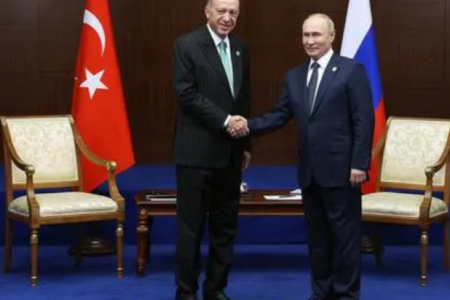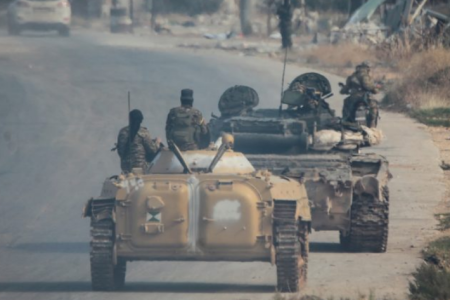
China has been using “gray zone” tactics, especially “People’s War at Sea” in realizing its expansion ambitions in the South China Sea (Vietnam calls it the East Sea). Ph.D. Alexander Vuving, a leading expert on East Sea and Asian security, at the Center for Asia-Pacific Security Research (APCSS), said that to deal effectively with China’s tactics, the small regional claimant states such as the Philippines and Vietnam need to soon bring China’s violations to the international community and persistently fight with China in the conflict region.
RFA: Some experts believe that China is carrying out the People’s war at sea – a tactic mentioned by former Defense Minister Chang Wan’an in the last few years. What do you think about this statement and how do you think China has used this tactic to fulfill its ambitions in the South China Sea?
PhD Alexander Vuving: People’s War on the Sea is indeed a very important tactic of China in the East Sea and they have been implementing this tactic for a long time. Initially, they used a number of soldiers disguised as fishermen. Gradually they developed the marine militia and now this force has grown quite strongly with hundreds, thousands of ships, and a very large number of people. Some of these forces are service-shifting soldiers (for example, formerly naval soldiers) and a lot of them are fishermen but are recruited as militiamen.
China has mobilized soldiers disguised as fishermen to occupy the Truong Sa (Spratlys) since the 1980s. For example, in 1988, when going to the Cross Reef to build a meteorological station, China used naval soldiers marked as fishermen using fishing boats to scout. Then, with this same tactic, they captured Mischief Reef in 1995 and more recently, Scarborough Shoal in 2012.

China captured this shoal by tactic cabbage with fishermen head, second round with marine police and navy which stays far, off the horizon. In the first round area, Chinese fishermen gathered in crowds to catch and drive away Filipino fishermen, and gradually they surrounded and prevented boats from countries like the Philippines or Vietnam from entering. After a while, they actually occupied and controlled Scarborough Shoal. That is the tactic of using militia in coordination with the Coast Guard ships that have helped the country occupy the rock islands in Spratlys.
Recently, China continued to use the People’s War at Sea tactic in Whitsun Reef. What China does at Whitsun Reef in March is also what they do here every year this season because this is a time when the sea is idle, the weather is relatively good. This year is the time China used a very large number, with more than 200 fishing boats to encircle the Whitsun Reef area with a scheme to establish actual control and drive away fishermen from other countries like Vietnam and the Philippines out. Notably, China has used this tactic for more than two years in the area near the island of Thi Tu (Thitu) controlled by the Philippines. They also used hundreds of militia ships to encircle this area, not to catch but stay anchored there to “create real control” while chasing away other ships, especially boats of the country claimant states in the region.
Thus, it can be said that this tactic is a repetition of what China has done in history and has done in the Thitu island area in recent years.
“The recent Chinese moves in Whitsun Reef are putting great pressure on Vietnam in the Sinh Ton island cluster. In this group of islands, Vietnam was stationed at four points: Sin Cowe Island, Grierson Island, Lansdowne Reef, and Collins Reef. China stationed at 2 points, including Gac Ma (Johnson South Reef) and Tu Nghia (Hugh Reef). Whitsun and Johnson South Reefs are strategically located because they are located at the western and eastern ends of the Sinh Ton island cluster. If holding those two ends, China can create pressure to divide and block the islands that Vietnam is holding in Sin Cowe cluster”- Ph.D. Alexander Vuving of the American Center for Asia-Pacific Security Studies (APCSS)
RFA: How would you rate the effectiveness of this tactic?
Ph.D. Alexander Vuving: This tactic is especially effective in the case of Scarborough Shoal and in fact China has taken over this entity. Despite the decision of the International Court of Arbitration, China still did not comply, they still drove fishermen of the Philippines and Vietnam to go fishing and the law enforcement vessel of the Philippines no longer entered the area again.
Currently, China and the Philippines are still disputed in the Thitu island area, although the situation is less hot, but still struggling. This tactic is often effective when the enemy does not have enough ships to deal with, meaning that there is no pressure on the field while keeping quiet or not creating pressure on international opinion and thus leading to loss of control.
RFA: In your opinion, what can small countries like Vietnam and the Philippines do to respond to China’s tactics as well as the powerful militia and coast guard of China?
Ph.D. Alexander Vuving: To cope, countries have to do it on two fronts. One is to bring this issue to the international community to create public opinion and take advantage of public pressure, especially from governments as well as international media. Second, in the field, they also need a force to struggle. Although their forces are thinner, not strong as China’s one they must be determined to maintain their presence there.
In 2014, when China brought the Hai Duong 981 drilling rig into Vietnam’s exclusive economic zone, Vietnam did exactly these two things and succeeded. Although at sea, Vietnam’s militia forces and seascape are much weaker than China, Vietnam remains determined to hold on. On the other hand, Vietnam has taken this issue to the world, even sent petitions to the United Nations, and invited foreign journalists to come to the scene to witness. Thanks to all these actions, Vietnam caused China to withdraw the rig ahead of time.
RFA: What would be the risk of casualties for small countries if this option was followed?
Ph.D. Alexander Vuving: The possibility of casualties is present but very little because the nature of this story is that all sides are trying to keep the conflict from escalating into armed conflict.
Because of this nature, China often uses the People’s War at Sea and gray zone tactics to gradually encroach, not aim at large armed battles.
RFA: People’s war at sea and the “gray zone” tactic that experts recently mentioned are one or two different tactics, sir?
Ph.D. Alexander Vuving: These are two different categories. People’s war (People’s Warfare) is based on the people to wage war, and People’s War often takes the informal form like “guerrilla war” or “non-conventional war.” The main aspect of China’s marine People’s War is to use militias and fishermen to participate in the country’s sovereignty war.
A gray area is a place where there is no peace but also no war. Gray zone tactics also employ some form of non-conventional warfare. People’s War is a form used by gray zone tactics. The gray area strategy also has many other forms such as: “Salami slice” [encroach a little each day, not to create a big conflict], “Putting others in passive situation” [eg occupied in one night] or cabbage tactics as in the case of China taking over Scarborough Shoal as analyzed above.
RFA: You said that victim countries like the Philippines need to speak up soon and condemn China’s violations. So in your opinion, is it too late for the Philippines to speak up about the Whitsun Reef incident when it was discovered that the Chinese fishing vessel had been anchored 2 weeks earlier?
Ph.D. Alexander Vuving: I think the Philippines speaking up like that is not necessarily late because the country doesn’t always know what’s going on until they go on patrol. In addition, when the number of Chinese ships is only a small number, 5,7,10 or 20 ships, it is not very appropriate to speak up because it is not clear, not worth mentioning.
“Smaller claimant states in the South China Sea need to increase their maritime awareness capacity to be able to know all ships and aircraft operating in their exclusive economic zone. They need to be determined not to allow any foreign ships to operate illegally in their exclusive economic zone. Vietnam, the Philippines, and Malaysia need to agree on this principle. Violations need to be widely publicized and other countries need to focus on condemning violations against the exclusive economic zone of any country from the coast of that country”- Ms. Bonnie Glaser – Advisor Senior Asia and Project Manager China Power at the Center for Strategic and International Studies (CSIS)
RFA: In your opinion, this tactic has caused difficulties and disadvantages for the disputing countries concerned as well as to the intervention of great powers, including the US?
Ph.D. Alexander Vuving: In my opinion, the disputing countries and the powers involved have the disadvantage that they have not prepared well for the gray zone strategy and the People’s War at Sea while these are the strengths and traditions of China. For example, with the exception of Vietnam, all countries currently do not have a maritime militia because they are bound by their own military doctrine and law, and thus are incapable of deterring China in the gray area. Although Vietnam has a marine militia, this force is still small because it was only established about a decade ago.
Thus, it can be seen that in terms of regular military force, in part, the US can deterrence thanks to aircraft carriers, submarines, missiles, but it cannot deter China in the Gray Zone. The nature of the gray area is to “circumvent the rules” so it is difficult to properly use “rules” to play.
RFA: The US has had a lesson in Scarborough and knows very well the nature of the gray zone war. In your opinion, if the US really wants to improve the situation in the South China Sea, what should it do?
PhD. Alexander Vuving: Actually, under the administration of President Trump, there was a US general who once declared that he would treat Chinese civilian ships and coast guard ships like it would for military ships. But that is only a temporary statement and is not feasible to be turned into policy because it entangles many legal barriers. It can be said that the US has not taken great steps to deal with the gray area tactics as well as the ability to participate in the gray zone tactics of the US is still weak.
Even so, I think the US can still do some things to improve the regional situation.
First, the US can promote maritime police cooperation with coastal countries like Vietnam and the Philippines to help these countries improve their capacity to protect their legal waters.
Second, is to help these countries use high-tech tools (eg drones or other non-lethal objects) for reconnaissance and repulsion.
The third is to support Vietnam and the Philippines to develop their maritime militia. This may cause the US to face difficulties in terms of law, military doctrine (the US military doctrine has no concept of maritime militia), but if we want to deal effectively with China, the US must change. Its military doctrine.
RFA: Thank you very much!
Thoibao.de (Translated)



